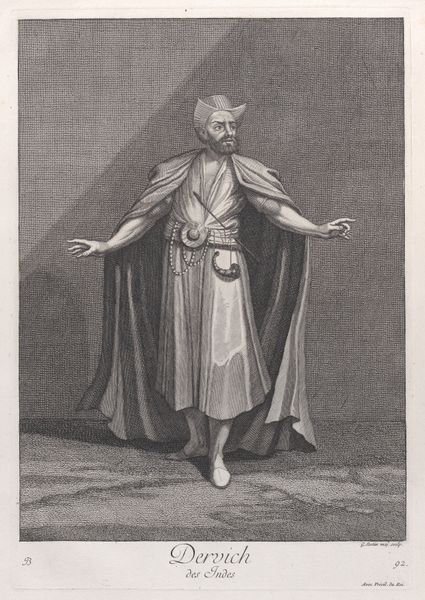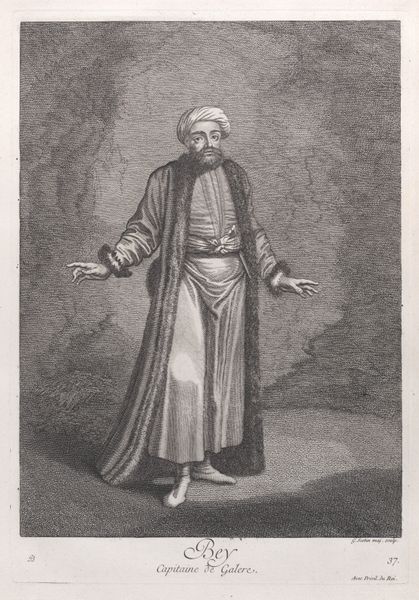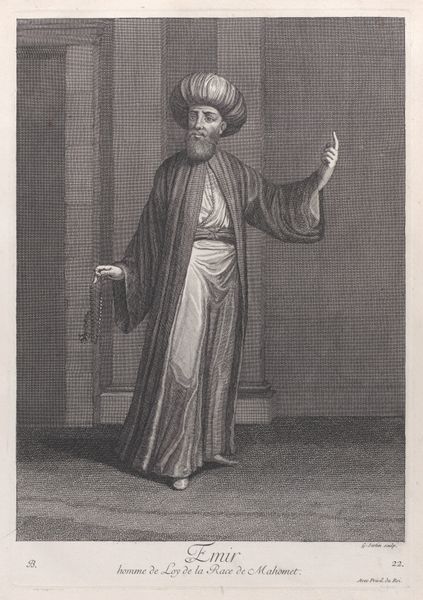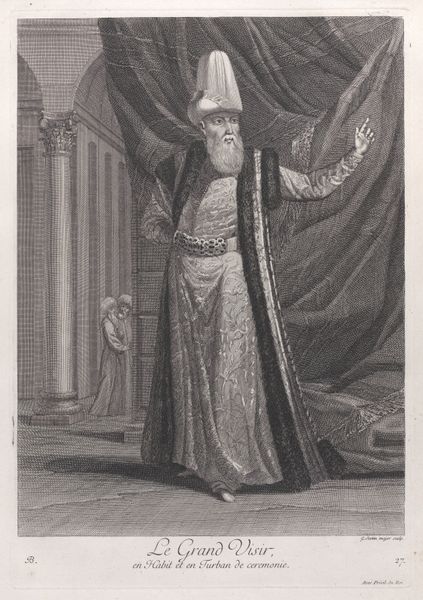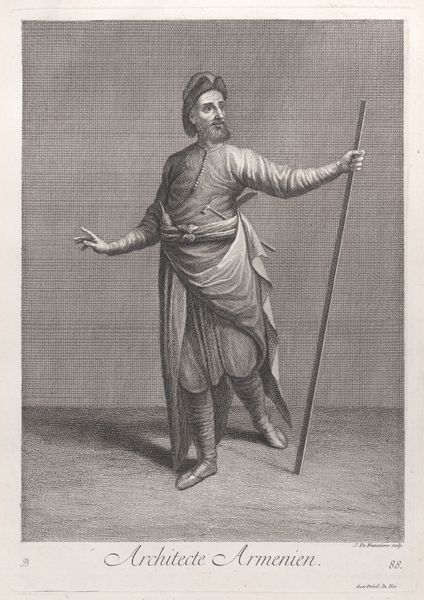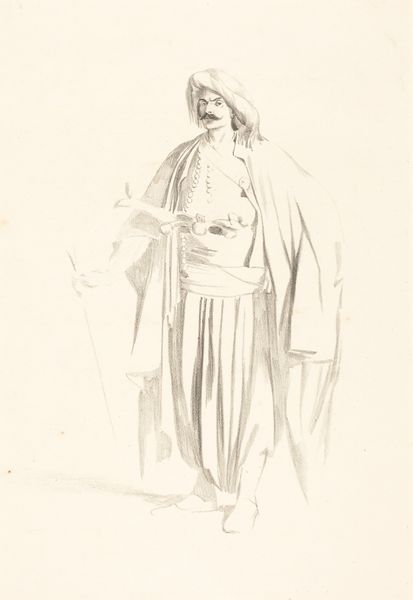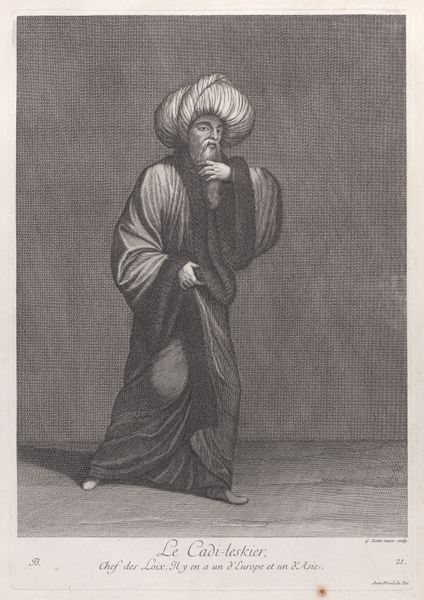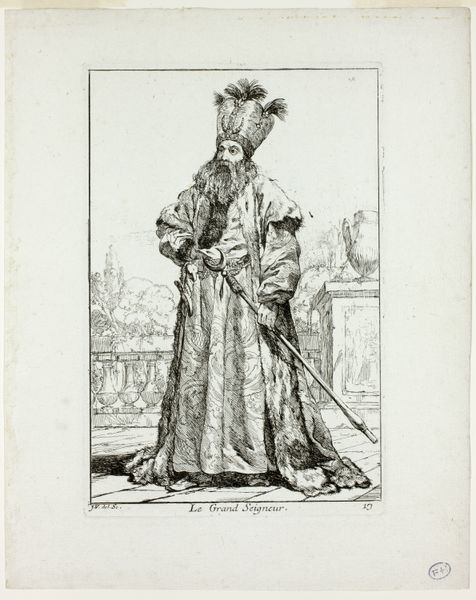
Capidgi-Bachi, ou Maitre des Ceremonies, plate 15 from "Recueil de cent estampes représentent differentes nations du Levant" 1714 - 1715
0:00
0:00
drawing, print, engraving
#
portrait
#
drawing
#
baroque
# print
#
men
#
portrait drawing
#
history-painting
#
engraving
Dimensions: Sheet: 16 7/16 × 11 15/16 in. (41.8 × 30.3 cm) Plate: 14 1/4 × 9 15/16 in. (36.2 × 25.3 cm)
Copyright: Public Domain
Editor: This is plate 15 from "Recueil de cent estampes representant differentes nations du Levant" called "Capidgi-Bachi, ou Maitre des Ceremonies," dating from around 1714-1715, by Jean Baptiste Vanmour. It's an engraving of a master of ceremonies and, well, the first thing I notice is how luxurious his robes seem. What do you make of it? Curator: Considering this print as a material object, what jumps out is the way Vanmour, and those who produced the "Recueil," were engaging with and, in some ways, creating the image of the Levant for a European audience. This wasn't simply documentation; it was a construction. Editor: Construction, how so? Curator: Think about the labour involved – from Vanmour’s initial sketches, likely made in Constantinople, to the engravers carefully translating those sketches onto copper plates, and then the printers producing numerous copies. The consumption of these prints allowed for the dissemination of ideas about the “Orient,” ideas often filtered through a very specific European lens. Are we truly seeing an accurate portrayal, or a fabrication crafted through the labour and material processes of printmaking for a specific market? Editor: So the materials themselves, the ink, the paper, even the copperplate, all become part of the meaning, adding layers of interpretation about production and consumption. Curator: Precisely. Consider the social context, too. Who was commissioning and buying these prints? What were they hoping to gain? Power, knowledge, perhaps even justification for colonial endeavors through an "exotic" image of another culture? Editor: It's fascinating to think about how a seemingly straightforward portrait is actually tied to such a complex web of production, consumption, and power dynamics. I had never thought of the print itself as a sort of material argument! Curator: Indeed. And through the materiality we reveal the mechanisms of cultural exchange and representation.
Comments
No comments
Be the first to comment and join the conversation on the ultimate creative platform.


